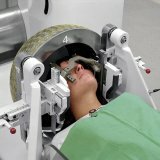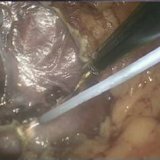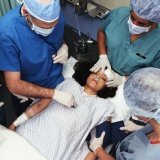What is dangerous cirrhosis of the liver
 As the largest internal organ in the body, the liver performs many vital tasks. For example, it relieves or neutralizes toxins( poisons, microbes and bacteria).The liver also produces proteins that regulate the coagulation of blood and bile, helps the body absorb fats and fat-soluble vitamins, it must remain healthy.
As the largest internal organ in the body, the liver performs many vital tasks. For example, it relieves or neutralizes toxins( poisons, microbes and bacteria).The liver also produces proteins that regulate the coagulation of blood and bile, helps the body absorb fats and fat-soluble vitamins, it must remain healthy.
What is dangerous cirrhosis of the liver?
Cirrhosis progresses slowly, so timely treatment can help prevent large liver damage. If the liver functions worsen, fatigue, weight loss, swelling in the legs and abdomen, jaundice can occur. If the disease is serious enough, it leads to death.
most common causes of liver cirrhosis is excessive alcohol use and chronic infection of hepatitis C virus
Signs and symptoms Symptoms
cirrhosis can range from no symptoms to outright liver failure. The most common symptoms include:
- Fatigue and weakness
- Loss of appetite, weight loss and nausea
- Small, red arachnid blood vessels under the skin
- Yellowing of the skin and eyes( jaundice)
- Redness of the palms( palmar erythema)
- Swelling of the stomach caused by fluid retention(ascites)
- swelling of the legs, feet and back caused by the accumulation of fluid( edema)
- Itching of the whole body
- Confusion( hepatic encephalopathy) caused by the accumulation of toxins in the blood Vomiting blood
Reasons for
The most common cause of liver disease is alcohol abuse.
Excessive use of alcohol on a regular basis almost always leads to liver damage, although not always to cirrhosis of the liver. Consumption 32 - 48 gr. Beer, 4 - 8 ounces of spirits, or 16 - 32 gr. Fault every day for 10 - 15 or more years significantly increases your chances of developing cirrhosis.
Other causes of cirrhosis include:
- Chronic hepatitis B and hepatitis C
- Hereditary diseases such as cystic fibrosis
- Autoimmune inflammation of the liver( when the body's own immune system attacks the liver)
- Blocked bile ducts
- Non-alcoholic fatty liver disease( where fat deposits accumulatein the liver and form scar tissue)
- Disorders of iron metabolism substances( hemochromatosis) and copper( Wilson's disease)
- Drugs or exposure to toxic substances.
Risk Factors
Alcohol-related:
- Women may develop liver disease even if they drink less than men.
- Obesity can increase the chances of developing alcoholic liver disease due to fat deposits in the liver.
Other factors:
- Hereditary diseases such as hemochromatosis and Wilson's disease
- Some medical conditions
- Chronic hepatitis B or C cirrhosis
Diagnosis Your doctor will examine the detailed history to try to identify the cause of your liver disease. Then the doctor will examine you closely to detect signs of liver disease, including yellowing( jaundice) of your eyes and skin, red spider blood vessels just under the skin, and redness of the palms.
The doctor will press on the stomach to determine the size of the liver. In the early stages of the disease, the liver can be enlarged and hard, but it contracts when scar tissue is formed.
Also, other tests will be assigned, such as a blood test to find certain liver enzymes, bilirubin test, ultrasound, CT or MRI or liver biopsy.
Prevention:
- Drink only in moderation.
- Take precautions to avoid getting hepatitis B and C.
- doctor regularly if you have a chronic hepatitis.
Treatment of cirrhosis of the liver
Cirrhosis is not treated, but it can slow the progression of the disease. Treatment depends on the cause - for example, do not drink alcohol or take interferon or other drugs, to strengthen your immune system, if you have chronic viral hepatitis. Your doctor will also begin treatment for complications by prescribing blood pressure medications to control portal hypertension or drugs to stop the bleeding of the veins. In some cases, liver transplantation may be necessary.
Lifestyle
If you have cirrhosis from any cause, it is vital that you stopped drinking alcohol to prevent further damage to the liver. If cirrhosis is caused by alcoholism, your doctor can offer you a visit to the club of anonymous alcoholics, this is a good place to start recovering and maintaining your abstinence.
You should also stop taking medications that can cause liver damage. For example, acetaminophen( Tylenol) can cause liver damage if you take large doses or if you regularly consume alcohol and paracetamol. Non-steroidal anti-inflammatory drugs( eg, naproxen or ibuprofen) can also lead to liver damage. If you have liver disease, do not take any medicines, herbs or supplements without first consulting a doctor.
You may need to make changes in your diet, for example, reducing salt intake, to treat complications of liver cirrhosis.
Drugs Drugs may provoke complications such as bleeding from the vein, the accumulation of infection in peritoneal fluid and brain damage( encephalopathy).
- Drugs for blood pressure( beta-blockers) - are taken to reduce portal hypertension, high blood pressure in the portal vein, which carries blood to the liver from the intestine. Beta-blockers include propranolol( anaprilin) and nadolol.
- Sandostatin - may be taken to stop the bleeding of vessels in the esophagus or stomach. Under the action of the drug, the blood vessels narrow.
- Diuretics( diuretics) - help to reduce the amount of fluid in the abdominal cavity. Diuretics include spironolactone( aldactone) and furosemide( lasix).
- Lactulose - is used for hepatic encephalopathy, brain and nervous system caused by the accumulation of ammonia in the blood. A damaged liver can not purify blood from ammonia and lactulose, synthetic sugar can help stop ammonia production.
Surgery
You may need a liver biopsy to determine the cause of cirrhosis and to check how much the liver is damaged. Typically, a liver biopsy involves inserting a needle through the abdominal wall into the liver to obtain tissue samples.
operation may be required to stop and prevent certain complications of cirrhosis:
- Endoscopic procedures to stop bleeding from the blood vessels in the esophagus
- Accommodation shunt to redirect blood from the liver, decrease of portal hypertension
- Draining the abdomen( called paracentesis)
- Liver transplantation



